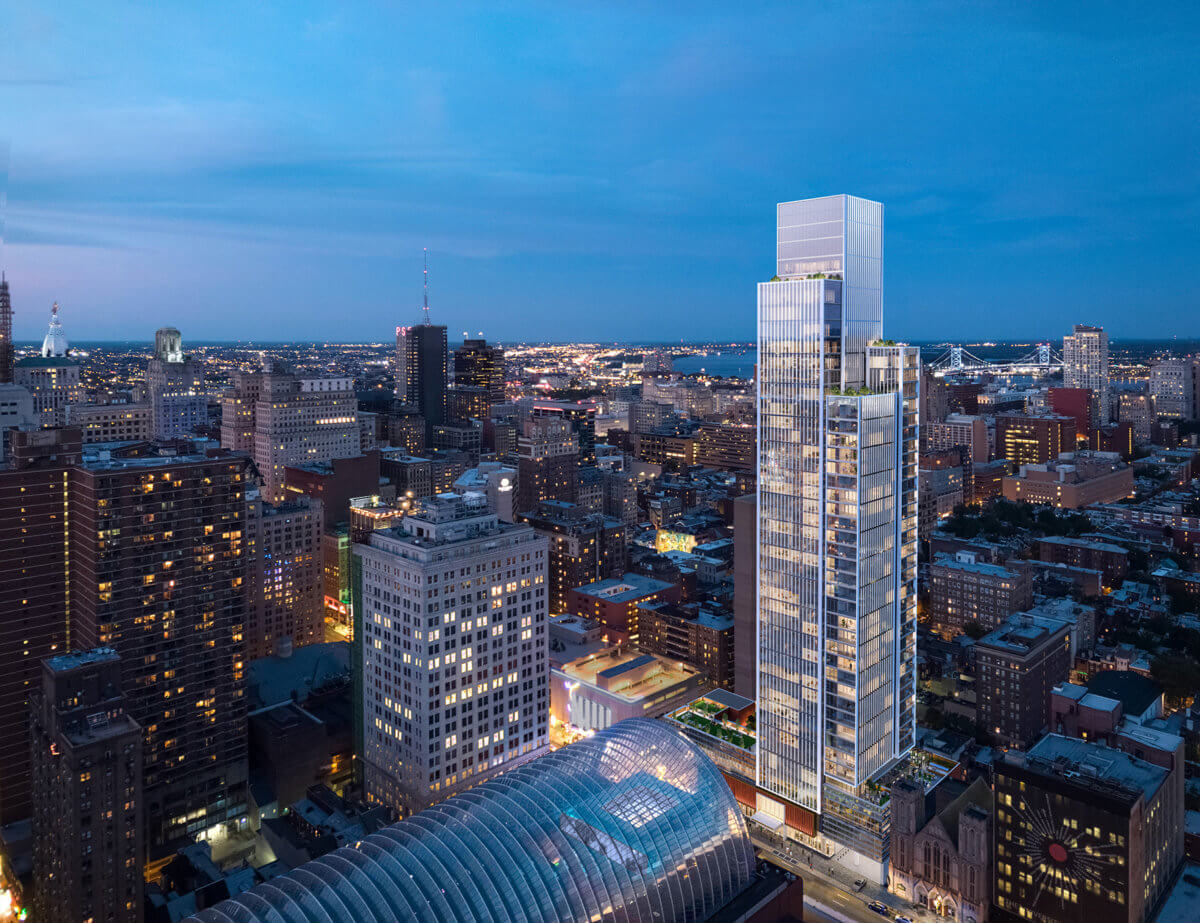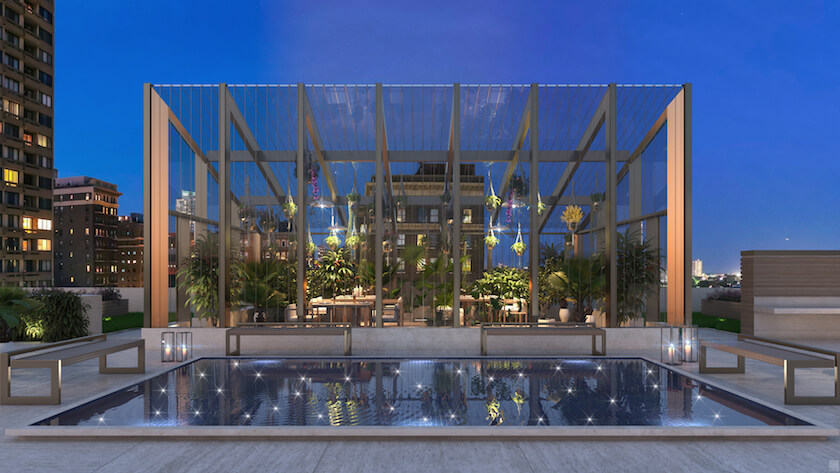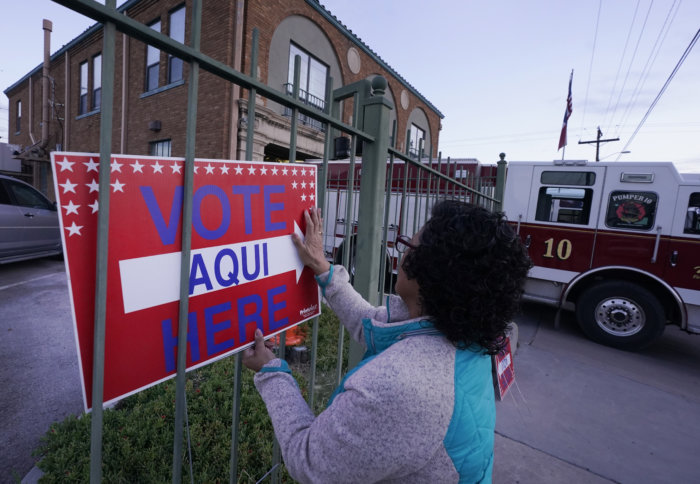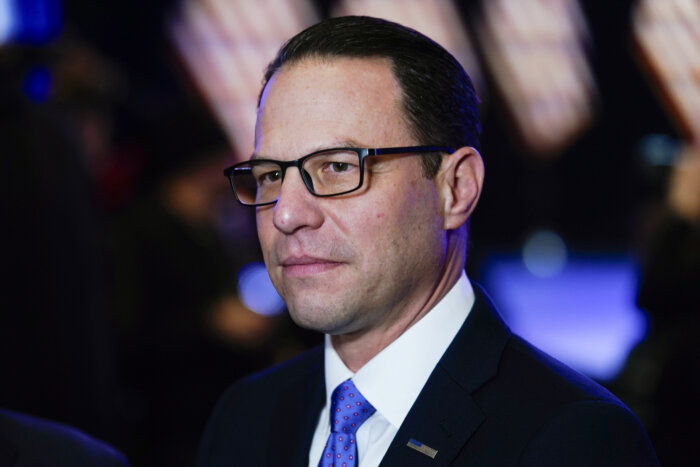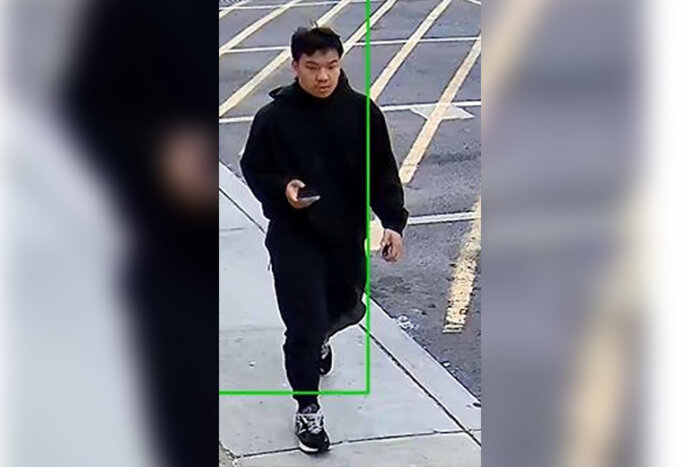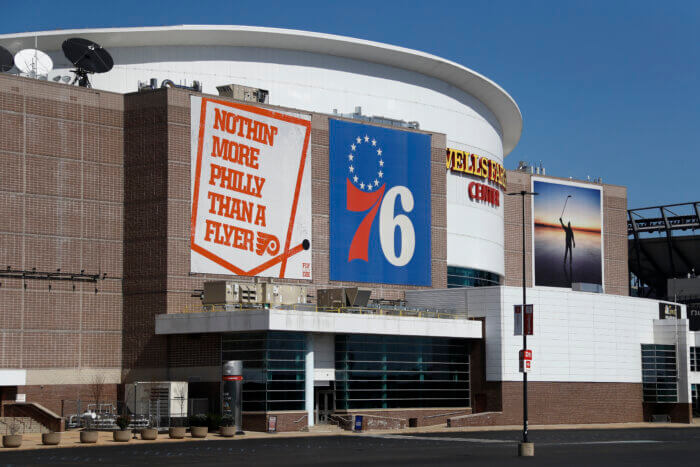Ostensibly a gathering meant to celebrate Philadelphia native visionary, A. Eugene Kohn, and the publishing of his new book, “The World by Design: The Story of a Global Architecture Firm,” Tuesday night’s event atop the Avenue of the Arts’ Kimmel Center focused as much on the now-famed block below as it did on one of its prize designers.
Philadelphia’s top-tier developers, architects, critics and their associates and friends met for the purpose of a panel, organized by Dranoff Properties, to discuss the wonder of the Avenue of the Arts, from start to present, with architect Kohn, developer Carl Dranoff, Pulitzer Prize-winning architecture critic Paul Goldberger, Kimmel Center CEO Anne Ewers, and Lauren Gilchrist, President of the Philadelphia chapter of NAIOP, the Commercial Real Estate Development Association.
A big portion of the conversation was about Dranoff Properties’ Arthaus condominiums, scheduled for completion in 2021. The residential building will take the form of a luxe, 47-story, 524-foot-high tower at Broad and Spruce Streets whose tag line, “live at the intersection of art and beauty” became the evening’s mantra. That seemed especially true when Dranoff called the Arthaus’ across-the-street neighbor, the Kimmel, and its Avenue of the Arts’ campus (the Merriam Theatre, the Academy of Music, and its expanded block) an amalgamation of “Lincoln Center meets Broadway meets the Upper West Side.”
Philly architect Kohn’s firm, Kohn Pedersen Fox, designed the Bauhaus-inspired property at 309 South Broad—the one-time home to Kenny Gamble/Leon Huff/Thom Bell’s Philadelphia International Records—with a hotel component and 40 additional stories six years ago when Dranoff’s wrecking ball commenced the demolition process, leaving a long and empty lot next door to the gothic Broad Street Ministry property.
Last June, Dranoff adjusted Arthaus’ tripartite tower plans, with the loss of the stories and the hotel, but showed off a transition that gained condo apartments (now numbering 108 units, ranging in size from 1,600 to 5,500 square feet), penthouses, and a greenhouse and private garden bed area where residents could, in the developer’s words, “plant kale and tomatoes, and sip cappuccino,” all while being able to admire “sweeping unobstructed views.” (For condo shoppers, original cost quotes for Arthaus space numbered around $1,200 to $1,500 per square foot). Goldberger called Kohn’s design for Arthaus, “pragmatic, but expressive, pushing design to tasteful extremes,” and therefore highlighting its Bauhaus-ian sense of necessity.
Both Dranoff and Goldberger (a contributing editor for Vanity Fair magazine, and the one-time architecture critic and “Sky Line” columnist for The New Yorker) talked up Arthaus’ prime Center City positioning, its close proximity to Philly’s rivers and the ease of walkability.
If the purpose of the most dynamic architecture is to highlight its personal interaction, Dranoff and Kohn guaranteed that Arthaus would offer this.
The star of the night, however, was still the glittering Avenue of the Arts.
Paraphrasing something that one-time Philadelphia Mayor and Pennsylvania Governor Ed Rendell once said before taking the office of the former in 1992, Anne Ewers recalled Rendell joking about walking down Broad Street at night and not being able to hit visiting inhabitants with a “bowling ball,” as the street was so devoid of traffic – on foot or by car. To that end, Rendell took control of the nonprofit Avenue of the Arts project in 1993, and the rest was history, as the Kimmel’s expanded campus now earns $540 million annually, and holds 9,000 seats (when including the Wilma Theatre) among its properties. That number rivals, and/or bests, that of NYC’s extended Lincoln Center and Washington D.C.’s Kennedy Center campuses.
While the focus of the evening was an Avenue of the Arts that included the Suzanne Roberts Theatre, the block’s many restaurants and the still-epic City Hall – a space Goldberg referred to as a “porous,” government building, one open and dedicated to transparency the way city government should be in a way other government properties are not – this reporter was curious about that which surrounded the Avenue of the Arts: the still-developing rest of Broad Street that included developer Eric Blumenfeld’s The Met and the Divine Lorraine to the north, and developer Bart Blatstein’s Giant supermarket corner to the south at Broad and Washington.
Calling Broad Street, “the spine of the city,” possibly with just as many nerve endings, Dranoff brought up the “virtuous circle” of favorable development, and the timing it takes to make these circles converge. While South Philly at Broad Street was deeply connected to its neighbors with new development adhering to its needs, North Broad Street has been a different animal, one of which Dranoff had been attempting to tackle for years. “We had the Packard Building there years ago, and we were ahead of our time,” said Dranoff, relating to the crowd that his company has been busy building up the blocks around the Avenue of The Arts long before the concerts at The Met and the diners and dwellers started hitting up the Divine Lorraine.



